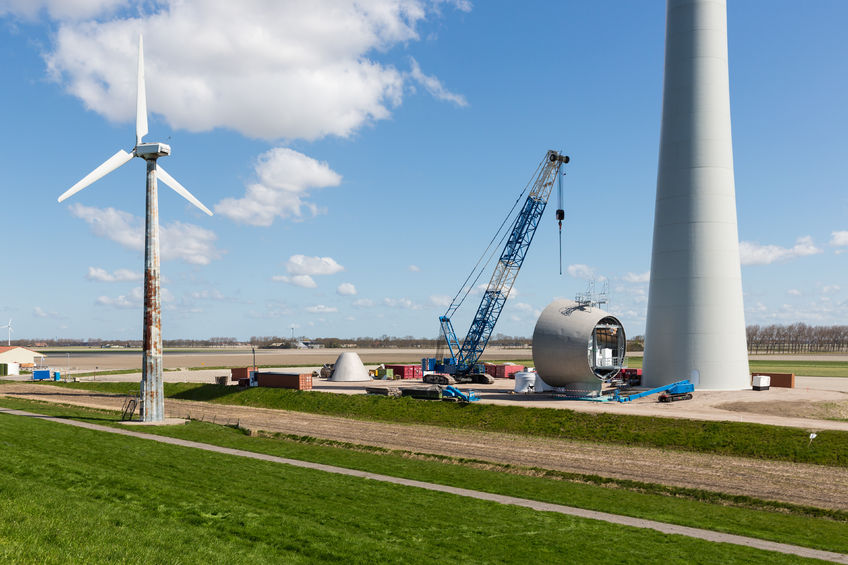It looks like the trend in the business is to go as high as possible.
The places with the best wind conditions have been already used in the first 20 something years of the wind industry.
Now it’s time to work with low wind sites – and probably, repower the older wind farms.
I consider tall a wind turbine tower of over 100 meters. They are not unusual and the majority of big OEM have solutions for low wind sites in their portfolio.
Both Nordex and Repower have tower of over 140 meters. Vestas has a 120 meter tall steel tower, Acciona has a 120 meter modular precast concrete solution and Enercon is ready to market a 149 hybrid (concrete + steel) tower for the E-101.
Siemens / Gamesa is not behind – they just build a 153 meter tower in the Sarahnlom wind farm (central Thailand).
With the cost of energy free falling and an aggressive competition from the solar energy manufacturers and developers are squeezing every dollar from the projects.
The benefit of taller WTGs is not only an increase in energy production, but often also less turbulence. This usually means a longer lifetime for the wind turbine and lower cost for operation and maintenance (as the loads on the system are lower).
It’s difficult to say upfront which solution is better – for shorter tower is usually steel, for taller tower either concrete or hybrid.
However this is a general rule and it should be crosschecked against local market conditions.
Price of steel is more or less uniform (unless there are huge tariffs, like for instance in Brazil).
Price of concrete is much more dependent on local conditions – if it’s possible to buy aggregates nearby, if there are big cement plants, etc.
As a result, precast concrete towers are usually better in big wind farm (50+ wind turbines), where transportation cost for the steel solution are much higher.
An additional benefit of in situ concrete tower is that it will boost your local content.

Leave a Reply